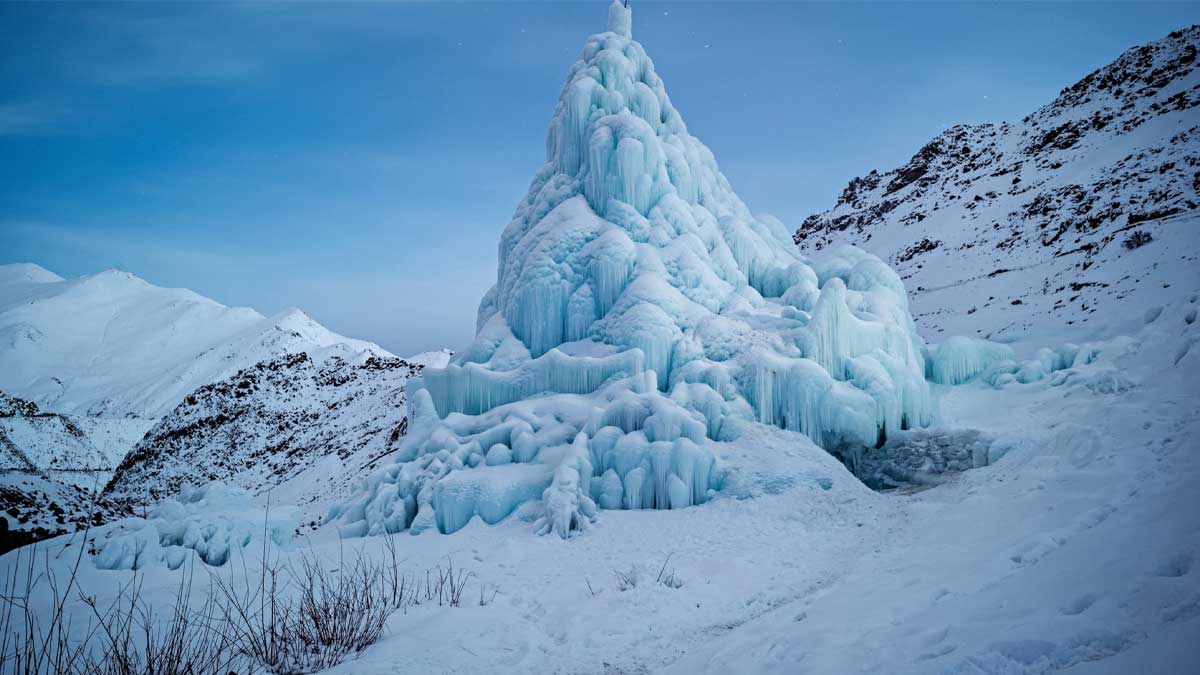The University of Gilgit-Baltistan, Karakoram International University Gilgit, and WAFA Foundation in partnership with the local residents have constructed five artificial glaciers in Gilgit Baltistan.
In order to help reduce the effects of climate change and to confirm that locals have access to water during the summer, Pakistan built 5 artificial glaciers. All the Local Experts are Involved in the Construction of Artificial Glaciers. Another use for these artificial glaciers is to gather and freeze large amounts of water throughout the winter months so that they could be employed during the dry season.
According to details, two glaciers have been developed in Skardu while one each has been made in Nagar, Hussainabad, and Khuwardu. Four of these glaciers stand above 4,000 meters while one is higher than 3,200 meters.
Read more: UK pledges over £55 million to Pakistan for fight against climate change
The procedure is part of the Glacier Lake Outburst Flood Risk Reduction (GLOF-II) project, which was embarked on by the Ministry of Climate Change. This excellent environmental cause was supported by the University of Gilgit-Baltistan, Karakoram International University Gilgit, the WAFA Foundation, and the locals of Chundu village, Skardu, Murko village in Nagar, Hussainabad village, and Khuwardu village.
A UNDP Pakistan official, Mehvish Bukari commented on the developments, the artificial glaciers are just another step to mitigate the issues stemming from climate change in Pakistan. The country has been one of the worst-hit by climate changes in recent years, and projects like these may help to decrease the damage or completely eradicate them in the future.
How artificial glaciers are made?
An artificial glacier is made in three steps. First, an ice stupa is made and it is connected to a water source on higher ground through a polyethylene tube to draw water downhill.
Second, galvanized-iron pipes carry the water collected at the base of the ice stupa to a sprinkler system. The system sprays the water on the ice stupa which freezes the water.





















